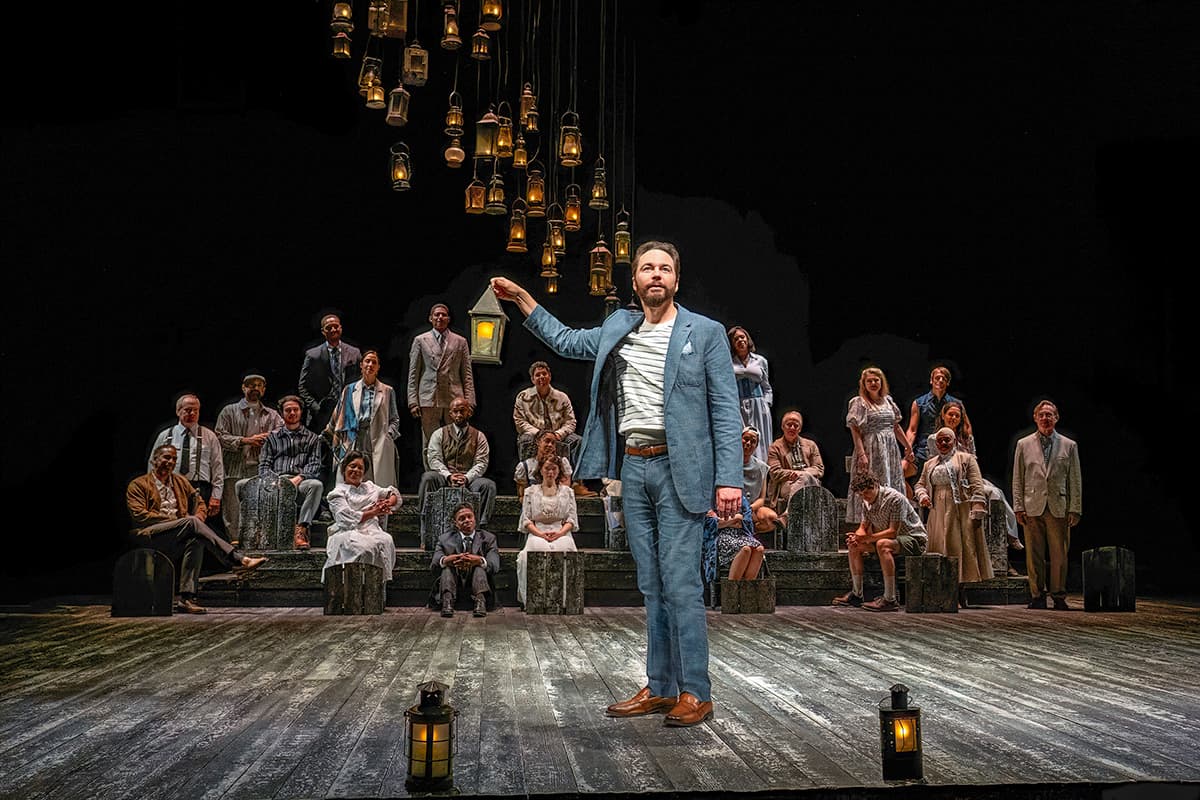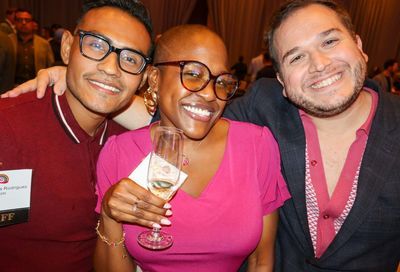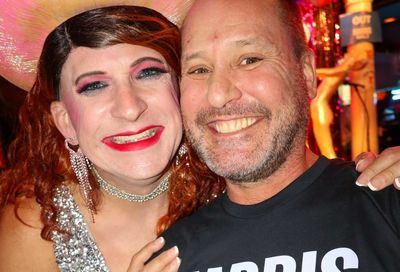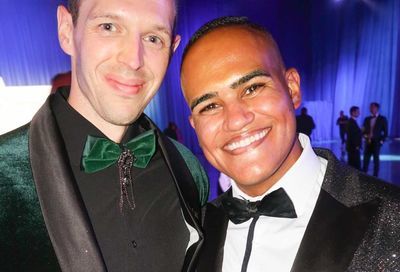Step Afrika! Pays Swaggering Tribute to Jacob Lawrence (Review)
Step Afrika! stomps up a storm with grace and precision in the uplifting epic "The Migration" at Arena Stage.

A thunderous rumble of drums beckons us back in time to the beginning of the beat. Played with crisp precision by an ensemble outfitted in minimal tribal costumes, the drums are the heartbeat, the first notes of music and language framing the epic story of The Migration: Reflections on Jacob Lawrence.
Joined by an additional cast of singers and musicians, the performers of Step Afrika! beat their drums and, of course, leap, tap, pirouette, stomp their feet fabulously, and, in some cases, split-jump up to the ceiling. World-class ambassadors of stepping, the company — celebrating its 30th anniversary — employs an array of percussive dance styles to perform works based on artist Jacob Lawrence’s landmark The Migration.
Unveiled in 1941, Lawrence’s series of paintings on sixty hardboard panels trace the migration of over six million African Americans from the rural South to the industrial North after the outset of World War I. The Migration panels capture resonant early 20th-century scenes of Black folks leaving behind the tenant farms and Jim Crow violence of the South on trains bound north for cities like Chicago, New York, and St. Louis.
Originally presented with captions written by Lawrence, who was accomplished at chronicling African American life and history in his art, the series doesn’t venture back to Africa. Yet, all those hopeful migrants could trace their ancestry back to a forced migration from the shores of the continent.
Hence, this production — directed by Jakari Sherman, who choreographed much of the work — does venture back, tracing the migration of African peoples, music, dance, and culture from their land of origin. The show’s first act connects the seminal drum calls to the ensuing rhythms that spread amongst enslaved Africans in America and were passed from one generation to the next.
Accompanying the ensemble’s precision-synchronized drumming and dancing — and soloist Abdou Muhammed making his djembe talk — details and fragments from Lawrence’s Migration are projected overhead. The projected frames don’t necessarily speak directly to the action onstage, given the departure from the specific subject matter of the work.
The relationship between the performance and the corresponding visual art can appear obscure at times. But the images, like the movement, always evoke a mood and emotion. A tableau of dancers, portraying enslaved people, lined up beneath a painting of Black mens’ hands shackled together speaks volumes, despite the fact that Lawrence was portraying 20th-century Black migrants who were “arrested on the slightest provocation.”
A Lawrence painting of a washerwoman stirring a tub of laundry with a wood staff is brought to life in the brilliant dance of an enslaved woman doing the washing. In her body, we see pain, perseverance, strength, and dignity.
In the movements “Go West” and “Drumfolk,” the ensemble depicts the shared experience and traditions, language and culture that enslaved Africans held onto through music and dance. A lively congregation meeting in a field bursts into vigorously danced group choreography that stirs up the calico costuming by Kenann Quander, as well as the spirit of resistance. “They took those drums away but they could not stop the beat.”
They could not suppress the spirit, either. In the “Wade Suite” — featuring excellent vocals by Ariel Dykes, Briona Jackson, Greg Watkins, and Kanysha Williams — African rhythms meet New World spirituals with stomp-happy rendition of powerful hymns. In the post-slavery South, church folk, free at last, dance up the Holy Ghost, as a painting of a noose hung from a tree looms overhead.
Act II of The Migration arrives in the 20th century, and more directly relays the characters and compositions in Lawrence’s Migration series. Women in dresses of bright hues, echoing the colorful hats, ribbons, and dresses in Lawrence’s paintings, spring forth in an era of blues, jazz, and overcrowded trains to Chicago.
In one of several superb second-act sequences, a trio of dancers portraying migrants fresh off the train in Chicago deftly use their suitcases as musical instruments, and occasionally a dance floor. Waiting down South to hear from their men, a trio of powerful women dance “My Man’s Gone Now,” set to the eponymous Nina Simone tune, and inspired by Lawrence’s painting of a woman reading a letter from her man up North.
Throughout, Sherman and his cast find the emotional connections between Lawrence’s kinetic scenes and cityscapes, and the stories the company seeks to tell in concert with those images.
The finale, “Chicago,” assembles a joyous spectrum of folks who made their way North to better jobs, housing, education, and opportunities. The dancers bring to life a train conductor, a flapper, a Negro League baseball player, a Jazz Age couple dressed to the nines in top hat and gown pulled straight from one of Lawrence’s panels, all transmitting that energy of optimism. Migrating north would change everything — almost.
In dances of dazzling dexterity and complexity, Step Afrika! pays swaggering tribute to Lawrence, and to the men and women who inspired him with their determination to find liberty and freedom somewhere.
The Migration (★★★★☆) runs through July 14 at Arena Stage, 1101 6th St. SW. Tickets are $56 to $105 with discount options available. Call 202-488-3300, or visit www.arenastage.org.
Jacob Lawrence’s Migration Series is housed in two museums: the Phillips Collection in D.C. holds the odd-numbered panels and the Museum of Modern Art in New York holds the even-numbered panels. For more info visit www.phillipscollection.org.
Support Metro Weekly’s Journalism
These are challenging times for news organizations. And yet it’s crucial we stay active and provide vital resources and information to both our local readers and the world. So won’t you please take a moment and consider supporting Metro Weekly with a membership? For as little as $5 a month, you can help ensure Metro Weekly magazine and MetroWeekly.com remain free, viable resources as we provide the best, most diverse, culturally-resonant LGBTQ coverage in both the D.C. region and around the world. Memberships come with exclusive perks and discounts, your own personal digital delivery of each week’s magazine (and an archive), access to our Member's Lounge when it launches this fall, and exclusive members-only items like Metro Weekly Membership Mugs and Tote Bags! Check out all our membership levels here and please join us today!

























You must be logged in to post a comment.